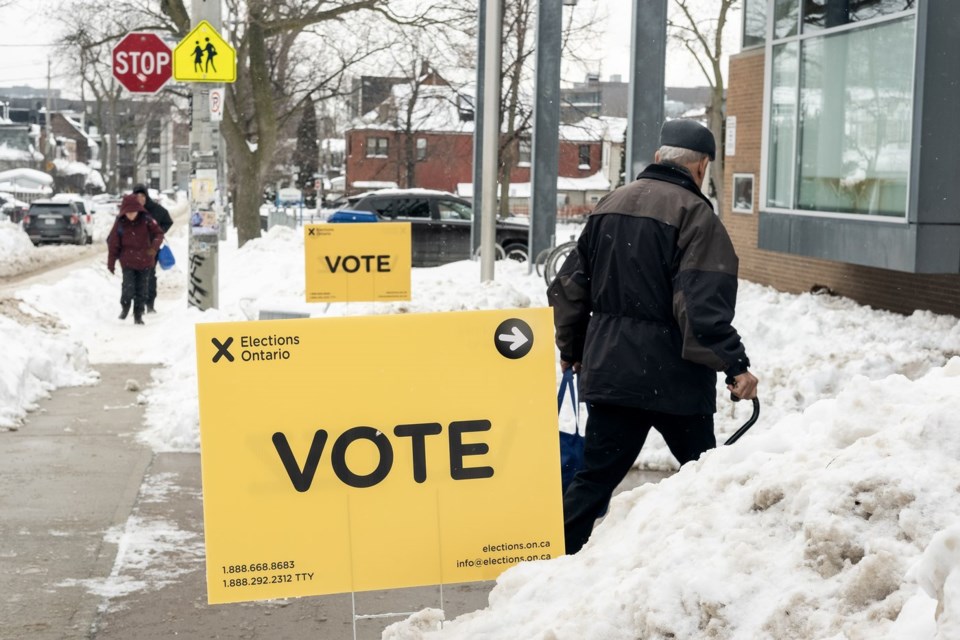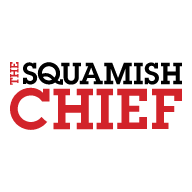The Progressive Conservatives are looking to win a third consecutive majority government for the first time in more than 50 years when Ontario votes on Thursday.
PC leader Doug Ford said he called the snap election because he needs a renewed mandate to deal with U.S. trade uncertainty despite already holding a decisive majority.
His main rivals — the NDP's Marit Stiles, Liberal Leader Bonnie Crombie and Mike Schreiner of the Green Party — have suggested the unusual winter campaign is Ford's gambit to pre-empt a federal election and any revelations from an RCMP investigation into his government's now-reversed decision to open up parts of the protected Greenbelt for housing development.
The last time a party pulled off three or more consecutive majorities in Ontario was a string of eight mandates the PCs won between 1945 and 1971.
Here is a brief history of the past 25 years of Ontario votes, based on reporting by The Canadian Press.
2022: Progressive Conservative majority
Ford's Progressive Conservatives strengthened their majority to 83 seats in a victory that toppled both the NDP and Liberal leaders.
While Ford's "get it done" pitch of new highways and hospitals won the day, the election produced Ontario's worst-ever turnout as voters appeared unenthusiastic about their alternatives and as the province emerged from the depths of the COVID-19 pandemic.
Liberal Leader Steven Del Duca and NDP Leader Andrea Horwath stepped down on election night.
The Liberals edged out the NDP in the popular vote but captured only eight seats compared to the NDP's 31.
Turnout: 44 per cent
2018: Progressive Conservative majority
Doug Ford ascended to the premier's office just three months after capturing the PC leadership in a campaign marked by his populist promises to introduce Buck-a-Beer — or set the price floor for beer at $1 — and cut gas prices by 10 cents a litre.
The Liberals imploded and leader Kathleen Wynne resigned after the party captured just seven seats, losing its official status.
Horwath's NDP formed the Official Opposition and earned their best result, 40 seats, since they formed government under Bob Rae in the early '90s.
Green Leader Mike Schreiner won the party's first seat in the legislature.
Turnout: 57 per cent
2014: Liberal majority
Wynne won a surprise majority government, boosting the Liberal seat count to 58, in a campaign she spent staving off accusations of government mismanagement.
Wynne had become party leader 16 months earlier after a gas plant scandal — in which the Liberal government cancelled two power plants at a reported cost of $1.1 billion — swept Dalton McGuinty out of office.
PC Leader Tim Hudak resigned following a campaign in which he pledged to cut 100,000 public sector jobs and create one million jobs in eight years, the latter promise panned by economists as based on faulty math.
Horwath and the NDP, who triggered the election when they refused to support a minority Liberal budget, tilted to the political right while promising to lower hydro rates and auto-insurance bills.
Turnout: 51 per cent
2011: Liberal minority
Ontario elected its first minority government in 26 years and Dalton McGuinty became the first three-term Liberal premier in over a century.
The campaign began with the PCs led by Hudak as the frontrunner, but the Liberals weathered backlash over broken promises and higher taxes to secure 53 seats, just one shy of a majority, while edging out the Tories for the popular vote.
The PCs and NDP, under new leader Horwath, both upped their seat count. Mike Schreiner contested his first general election as Green leader.
Turnout: 48 per cent
2007: Liberal majority
The Liberals secured a second majority government and boosted their seat count.
Liberal shortcomings, including a broken promise to hold the line on taxes in their first budget and delayed plans to close coal plants, appeared to be overshadowed on the campaign trail by PC Leader John Tory's promise to extend funding to faith-based schools.
Tory was the first leader of the three major parties in 17 years to be denied a seat in a provincial election, losing to then-education minister Wynne.
The Greens secured what remains their best popular vote result, at eight per cent.
Election day doubled as a referendum on the province's electoral system, with voters opting to stick with first-past-the-post.
Turnout 52 per cent
2003: Liberal majority
The Liberals secured a landslide victory and the PCs were dealt a humiliating defeat under Ernie Eves, who had taken over the premier's office after Mike Harris's resignation.
Liberal leader McGuinty promised to end what he called the PCs' "politics of division" honed over eight years in power, often characterized by the PCs tax cuts, slashed welfare rolls and fights with teachers' unions.
Eves appeared to start with a strong case for tax cuts and fiscal restraint, but the campaign spun out in the finals weeks after the Tories issued a news release calling McGuinty an "evil reptilian kitten-eater."
The NDP fell further from its previous election result and won seven seats.
The E. coli outbreak in Walkerton, where seven people died and thousands fell ill, and later a meat-packing scandal in Aylmer fuelled campaign-trail criticism of Tory cutbacks.
Turnout: 57 per cent
1999: Progressive Conservative majority
Harris's PCs, who campaigned on slashing taxes, became the first in three decades to win back-to-back majorities.
McGuinty contested his first election as Liberal leader. The NDP, coming off a crushing defeat in the previous election after five years in power between 1990 and 1995, won just nine seats and lost party status.
Voting hours had to be extended in some areas after a bomb threat and threatening phone calls stopped some staff from showing up to their polling stations.
Turnout: 58 per cent
This report by The Canadian Press was first published Feb. 24, 2025.
Jordan Omstead, The Canadian Press




